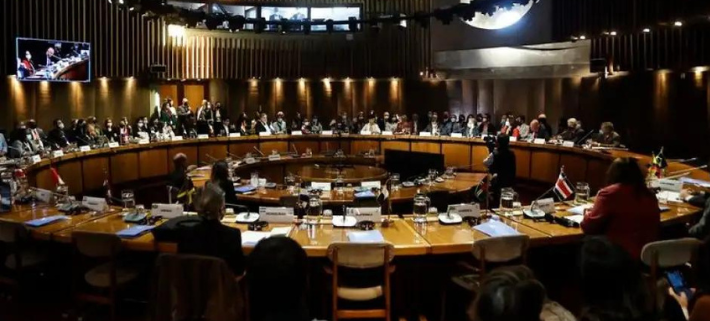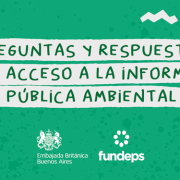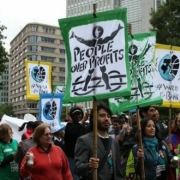The concrete results of COP 1 of the Escazú Agreement
From April 19 to 22, at ECLAC headquarters, Santiago de Chile, the first Conference of the Parties to the Escazú Agreement (COP1) was held. The States Parties met there in order to design and adopt important rules for the implementation of Escazú.
“Below, we offer a google translate version of the original article in Spanish. This translation may not be accurate but serves as a general presentation of the article. For more accurate information, please switch to the Spanish version of the website. In addition, feel free to directly contact in English the person mentioned at the bottom of this article with regards to this topic”.
COP 1 had the participation of the Latin American and Caribbean States that today are obliged to comply with it. These are: Antigua and Barbuda, Bolivia, Ecuador, Guyana, Mexico, Nicaragua, Panama, Saint Vincent and the Grenadines, Saint Kitts and Nevis, Saint Lucia, Uruguay and the Republic of Argentina.
A noteworthy point was that the Conference not only had the face-to-face participation of representatives of the public, but also interested people could participate online or follow its live broadcast on YouTube.
During the second day, two fundamental issues were discussed on the road to the implementation of the treaty. First, the draft Rules of Procedure of the Conference of the Parties were discussed. In addition, the modality for the significant participation of the public was discussed, as established by article 15.4 of the treaty.
Here it is worth highlighting the incorporation of a simple mechanism to select representatives of the public who will be able to participate in the COP and who, according to the provisional project, would have two seats enabled at the table in the room. In addition, one of the representatives will be part of the Board of Directors, the body in charge of presiding over the meetings.
Second, the Rules of composition and operation of the Committee to Support Application and Compliance (art. 18) were discussed. It should be noted that according to the revised project (later approved), the Committee constitutes a key body for monitoring the implementation of the Escazú Agreement by the States.
A key point in this latest regulation is the one that incorporates a communication mechanism for the public in the event of any non-compliance by the States. This constitutes a fundamental tool since it allows exposing the violation of the treaty, and after an internal procedure, the Committee must adopt the conclusions and recommendations for the “denounced” party, and must then report the case to the COP.
Finally, a draft decision on Human Rights Defenders in Environmental Matters was discussed. Around this problem that seriously affects the region, the Conference planned an open-ended ad hoc working group on human rights defenders, to develop an action plan; and a forum to prepare a final report as input.
Although there were tensions around the role of public participation based on the position of certain States, the truth is that the goals set and the regulations approved meet adequate and innovative standards (although they can be improved) in relation to any treaty. till the date. It provides tools of practical utility whose dissemination and use should be promoted, even when the participation of groups of people in situations of vulnerability has not been really significant.
More Information
- Rights in the Escazú Agreement
- ESCAZÚ AGREEMENT: Access to Information, Public Participation and Justice in Environmental Matters
- Argentina ratified the Escazú Agreement
Links of Interest
- Escazú COP 1 website
- Draft Regulations of the COP
- Draft Regulations of the Committee to Support Application and Compliance
- Draft Declaration on Environmental Defenders
Contact
Juan Bautista López, juanbautistalopez@fundeps.org
*Picture of Diario Perfil








